- May 28, 2020
- Posted by: Shane Daly
- Category: Trading Article
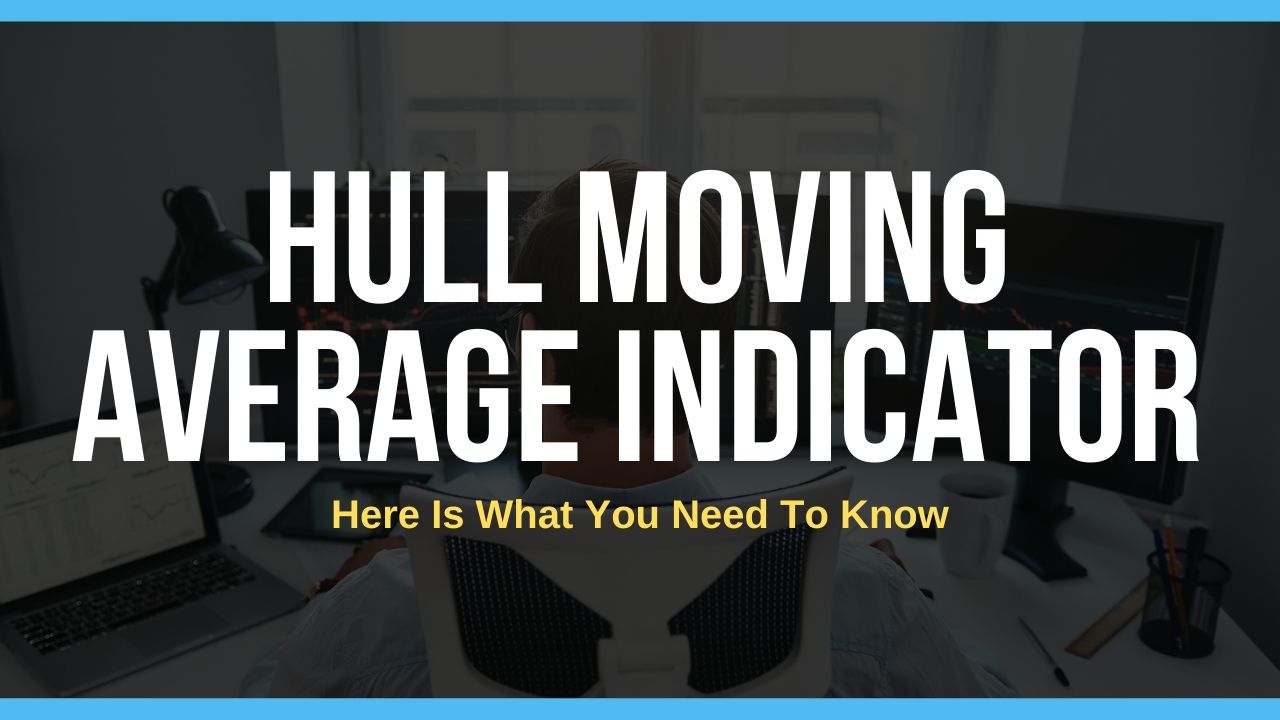
Moving averages come in different types and they lag price. The simple moving average weighs each price point equally so it lags the most.
Different twists such as the EMA and WMA evolved which emphasized price differently.
The Hull Moving Average indicator was developed by Alan Hull and reduces the lag from current price levels the best without looking choppy.
What Is The Hull Moving Average Indicator?
In 2005, Alan Hull worked hard to reduce lag in the moving average while maintaining the smoothness of the average.
The formula to calculate the Hull MA includes the weighted moving average:
Hull MA= WMA (2*WMA (n/2) − WMA (n)), sqrt (n))
Calculate a Weighted Moving Average with period n / 2 and multiply it by 2
Calculate a Weighted Moving Average for period n and subtract if from step 1
Calculate a Weighted Moving Average with period sqrt(n) using the data from step 2
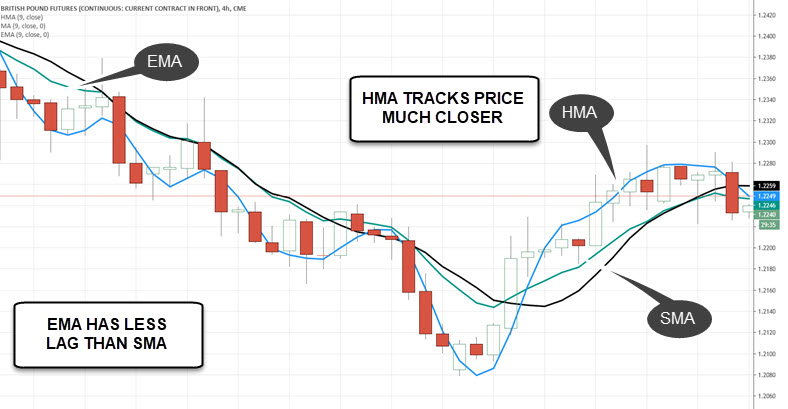
You see on this four hour Futures chart that the Hull MA smooths the data closer than the other two moving averages and why it’s a popular indicator.
The indicator should be available on any number of the free and paid futures charts you can get online.
Using The Hull Moving Average For Trend Direction
As with most averages, traders like to use them to define the trend of their market.
Generally, you would use a longer setting to determine the trend direction as opposed to the default setting of 9 periods.
In this example, we are using the slope of the 50 period Hull MA (since that is a common SMA/EMA period used) as we would with other averages.
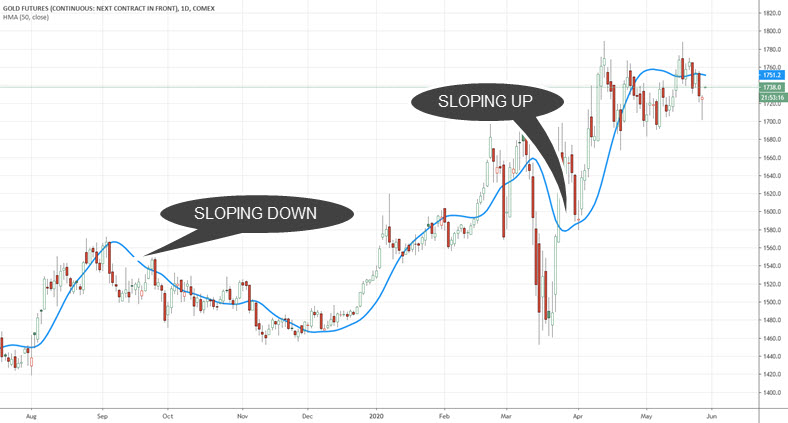
Traders would want to use the general slope of the moving average since it does track price closely.
When we have the HMA sloping down, we would only consider short positions.
An up sloping HMA would have traders looking for long trades with any number of other trading strategies.
Since the Hull moving averages uses square root, consider only using numbers that you can square such as 4, 9, 16, 25, 49, or 81.
What About A 2 Hull Crossover Method?
Let’s dive into that question with an example using multiple hma: 16 HMA and 49 HMA crossover parameters to determine entry and exit points.
Short positions when 16 period crosses to the downside of the 49 period
Long positions when 16 crosses 49 period to the upside

There are many crossovers on this daily chart of Gold futures with some in direction violation of the longer term trend.
Alan Hull did not recommend crossovers as a trading method due to the one thing he was trying to avoid: indicator lag.
I ran a quick back test on GLD SPDR:
Daily chart 4 years
Long only
Entry by next open after cross up
Exit will be when price low is less than 49 HMA
The results long only:
Net profit: 13.57%
Buy and hold: 33.97%
Positions – 48
Wins 38%
Max draw down – 11.36%
Avg win: 2.61%
Avg loss – 1.01%
Avg return – .35%
Those are some rough number without optimizing anything but can give you a rough idea of using the Hull moving average crossover. Trading is about probabilities and having an edge so ensure know what yours is before trading.
What’s The Main Difference Between Hull MA and the Exponential Moving Average?
It really depends on how you want to use it. Let’s look at it from a day trading perspective where changes in trend direction will really matter.
This is a 5 minute intra day stock chart of TSLA (Tesla)
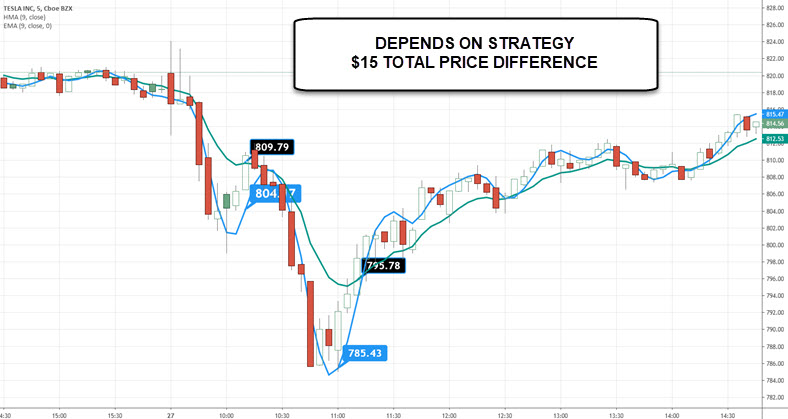
The HMA alerted you with lower price points if looking to buy due to the formula of the indicator compared to the EMA.
Traders may, as their day trading strategy, choose to use this chart for trend and a 3 minute chart for trade decisions. This example shows that you would be getting a bargain on the stock by using the Hull.
Multiple Moving Averages – Trend and Trigger
We know the Hull average has advantages over other types of MAs. Let’s use those to our advantage in a day trading strategy.
Due to how quickly the indicator reacts to price, the averages setting intraday, while something to consider, don’t spend too much time optimizing.
- Use a longer term average (81) for trend direction that will alert us earlier to trend changes
- Use a short Hull moving average for trade entries (9) that we’ll get faster than any other average
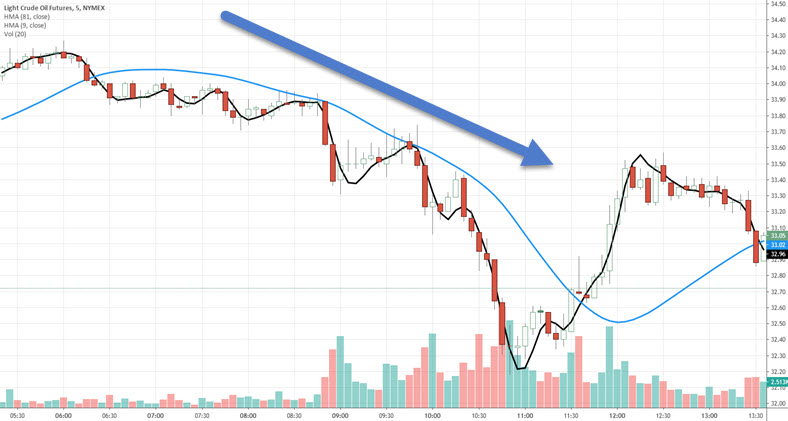
There are a few ways you can trade this strategy:
- Enter when the fast HMA flips in direction of trend
- Enter when price breaks below the fast HMA
- Enter first position on the crossover
- Exits can be break above fast average, crossover, touch of slow HMA
There is no best setting for the Hull moving average indicator. It will depend on factors including:
- How much you want to trade
- Markets you trade
- What you can handle psychologically
As with any trading strategy, you must back test your trading rules before using real money.
Conclusion
The Hull Moving Average does a great job of reducing lag as well as smoothing out the price data.
Although not intended for crossovers (as that increases lag), there are still trading strategies such as pullbacks, breaks of average, that you can use.
The list of technical indicators you can also add to your strategy is long, but keep in mind that the more you add, the risk of over optimizing can happen.
Make sure you fully understand trading in the futures markets as there are things such as expiration and contracts sizing you should be aware of.
2 Comments
Comments are closed.

Any thoughts on the HMA combined with either the Renko or Heiken Ashi bars on a 5″ or 1″ chart?
The thought would be different calculations which will result in a different looking HMA. Unless the other charting types is part of the strategy, keeping it simple is my other thought.